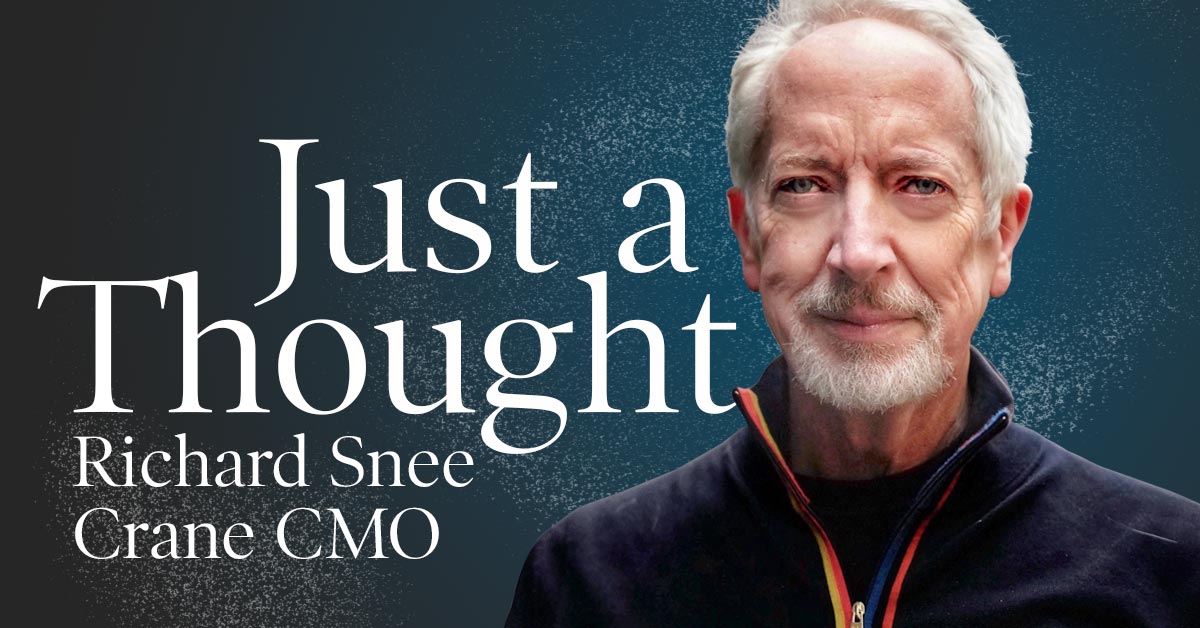Barthes, Brands & the Battle for Meaning in the Age of AI

The Pasta Sauce That Changed My Mind
A few weeks ago, I stumbled on (truth be told, somebody tricked me into reading) an oldish essay by Roland Barthes
—the French literary critic who would have crushed it on LinkedIn today if only he’d swapped his cigarettes for a flat white and a good ring light. The essay, titled “Rhetoric of the Image,” presented an absurdly simple premise: a photo of a pasta ad isn’t just a photo. It’s a sales pitch. A story. A signal. Even the string bag mattered.
That was 1964. And honestly, the guy might’ve been onto something bigger than spaghetti!

Fast-forward to now: we’re awash in images—real, fake, AI-generated, emotionally manipulative, accidentally profound. And this is just the beginning. In the next year or two, AI-generated video and fully automated content ecosystems will become so polished, so realistic, that the line between authentic and artificial will blur entirely. The volume of visual content won’t just increase—it’ll accelerate. If you’re a founder, marketer, investor, or even mildly online, I’ve got news for you:
You’re not just selling a product. You’re in the meaning business.

Why This Isn’t Just “Marketing Major” Clickbait
Let’s be honest. Most of us are drowning in advice about how to go viral, how to optimize CAC, and how to post more “authentic” content without actually being vulnerable. But nobody talks about the deeper game: Who decides what your brand means?
Spoiler: it’s not just you.
Barthes showed us that meaning is made in the margins. The image itself (“denotation”) is just the canvas. The meaning (“connotation”) is the story we build around it. The latte art you posted? It’s not just milk in a leaf shape—it’s a window into your lifestyle. Your values. Maybe even your net worth.
Startups often miss this. They launch with a killer product, a decent logo, and a founder photo that might be a bit cringey, but it does the job. However, without context and intentional storytelling, you’re not building a brand. You’re building a Rorschach test.
And here’s the problem with Rorschach tests: people see what they want to see.

Three Rules for the Semiotics (Symbols and Signs) of Startups
Let’s break it down like a cap table:
1. Brand = Meaning, Not Aesthetic
Your brand isn’t your color palette. It’s not your typeface or your TikTok strategy. It’s what people think and feel when they see you. You don’t get to choose what they believe—but you do get to influence it.
Startups that win? They treat every asset—images, emails, packaging, pitch decks—as a meaning machine.
Want to be premium? Show restraint. Want to be rebellious? Break patterns. Want to be trusted? Then show up in ways that earn it, not just say it.
2. Context is the Payload
Same image, different context? Totally different impact.
- A founder in a hoodie at Demo Day = hustle.
- A founder in a hoodie at Davos = arrested development.
Your product shot might look great on your landing page, but does it still work as a thumbnail on Threads? Does your “authentic” founder story resonate across cultures, or just with other tech bros in SF?
You don’t need more assets. You need smarter context.
3. AI Isn’t the Threat. Meaninglessness Is.
Generative AI can do a lot—write your landing page copy, create fake influencers, even make your investor update sound less like a cry for help. But it can’t assign real meaning. Only humans do that.
If everyone can generate images, the differentiator isn’t volume—it’s vision. We’re about to see a flood of visual noise, and the brands that win will be the ones that wield visuals like strategic weapons, not just content filler.
Barthes would’ve loved Midjourney. But he would’ve hated lazy branding.

The Real Rhetoric of the Image
So here’s the gut check for every founder, every CMO, every investor nodding along while scrolling LinkedIn: What does your brand actually say—before you say anything at all?
If someone scrolls past your post, sees your aesthetic, and lands on your site—what argument are you making without words?
Because if you’re not making one, someone else is. And they might be using Comic Sans!

TL;DR (What Founders Should Remember)
- Images don’t just show. They argue.
- Meaning is your moat.
- In the age of AI, human-coded context is king.
Barthes broke down a pasta ad. You need to decode culture.
And in case you’re wondering: no, this doesn’t mean your startup needs a PhD in French semiotics. Nor does anyone need to read the Barthes essay.
But it does mean this:
Start thinking in meaning. Not just in media.

Just a Thought
Next time you’re about to post that image, that “raw” founder moment, that mid-sip coffee selfie—pause and ask:
What story am I telling?
What belief am I reinforcing?
What meaning am I building?
Because in this game, attention gets you in the door. Meaning makes you unforgettable.
Here’s to building brands that do both.
—Richard

